Catheter Training: A Comprehensive Guide
Posted on 18th March 2024
Catheterisation is a very common medical procedure often used to help people with various conditions, such as urinary retention, post-surgery recovery, or chronic illnesses. Whether you're a healthcare professional or someone who needs to self-catheterise, proper training is essential for a safe and effective intervention.
In this blog, we will explore catheter training, covering the basics, types of catheters, insertion techniques, and tips for maintaining good catheter hygiene.
Lets get straight to it!
Understanding Catheters
Before delving into catheterisation training, it's crucial to understand what catheters are and their different types. Catheters are thin, flexible tubes inserted into the body to drain fluids or administer medication; although we usually only associate them with draining urine from the bladder. Catheter come in various sizes, materials, and designs to suit different needs. Here are some common types to remove urine from the bladder:
Indwelling Catheters (Foley Catheters): These are designed to remain in the body for around 12 weeks at a time. They are often used for urinary retention, post-surgery, or if monitoring urine output for kidney and heart health.
Intermittent Catheters: These are used for short-term drainage and are removed after each use. They are commonly employed for individuals with urinary retention issues.
External Catheters: These are worn externally and are suitable for male patients who have difficulty using other catheter types. If a male’s prostate is too large, it can block a catheter from being inserted and so a convene can be used instead.
Suprapubic Catheters: These are surgically inserted into the bladder through a small incision in the abdomen, typically for long-term use. They don’t go into the urethra, these types of catheter are common for people with spinal injuries.
Catheter Training Steps
1. Consult a Healthcare Professional: The first step in catheter training is to consult a healthcare professional, preferably a nurse or a urologist, who can assess your specific needs and recommend the most appropriate type of catheter for you.
2. Gather Supplies: Gather all the necessary supplies, including the catheter kit, lubricating jelly, sterile gloves, a leg bag and strap, the catheter and a container for urine collection.
3. Hand Hygiene: Wash your hands thoroughly with soap and water before starting the procedure. Ensure you have clean, dry hands and nails.
4. Find a Comfortable Position: Position yourself comfortably, either sitting on the toilet or lying on your back with your knees bent. Choose a position that allows easy access to the catheter insertion site.Prepare the Catheter: Open the catheter kit and prepare the catheter for insertion according to the manufacturer's instructions. Apply lubricating jelly to the tip to ease insertion.
5. Prepare the Catheter: Open the catheter kit and prepare the catheter for insertion according to the manufacturer's instructions. Apply lubricating jelly to the tip of the catheter and the location where the catheter is going to ease insertion.
6. Insert the Catheter: Gently insert the catheter into the urethra, following the natural angle and direction. Be patient and do not force it. If you encounter resistance, stop and consult a healthcare professional. Any catheter insertion into the urethra should be pain free, but can still be uncomfortable.
7. Secure Drainage: Once the catheter is in place and the balloon is inflated, secure the catheter to the leg bag and use a G-Strap to prevent it tugging and hanging down.
8. Collect Urine: Allow urine to drain into the collection container. If using an intermittent catheter, remove it once urine stops flowing.
9. Dispose of the Catheter: Dispose of the used catheter in a sanitary manner as per local guidelines.
Catheter Hygiene and Maintenance
Maintaining proper hygiene is crucial when using a catheter to reduce the risk of infections and complications. Here are some tips:
1. Clean Daily: Clean the area around the catheter insertion site daily with mild soap and water. Avoid harsh chemicals or perfumed products.
2. Stay Hydrated: Drink plenty of water to help flush out the urinary tract and prevent blockages or infections.
3. 12 Weekly Follow-ups: Schedule regular follow-up appointments with your healthcare provider to monitor your catheter and address any concerns.
4. Infection Signs: Be vigilant for signs of infection, such as a temperature of 38 degrees or higher, pain, or unusual discharge, and seek medical attention if you experience any of these symptoms.
If you are looking specifically for training on catheter care, you can find more information by clicking this link: Catheter Care

Common Side Effects
As with anything, there is always a chance that you will experience effects other than what you expect or is desired.
People using a catheter can:
1. Experience an increase in urinary tract infections (UTIs)
2. A sensation of needing to urinate when you don’t need to
3. Tenderness around the insertion site
4. Blocked catheter leading to pain, swelling of the bladder
5. Blood in the urine
If you experience any of these side effects, you should speak to your G.P or healthcare provider for advice and support.

We hope this has been useful for you and answered any queries or concerns you've had about Catheter care and Catheterisation.
Free feel to check out our other blogs for more information about a whole range of topics.
Care Planning & Risk Assessment Course

Care planning and risk assessing is an essential part of delivering any care, especially culturally appropriate care. Click the link below to head to our course page!
End of Life & Communication Course

Getting it right is never more important than at the end of a person's life. This course helps you and your team to prepare and get it right.
Person Centered Care & Dignity

If you would like training on the most essential area of care, this course is for you. Transform your staff's understanding and develop them to be able to deliver culturally appropriate care.
Tagged as: Catheter Care, Catheterisation
Share this post:







